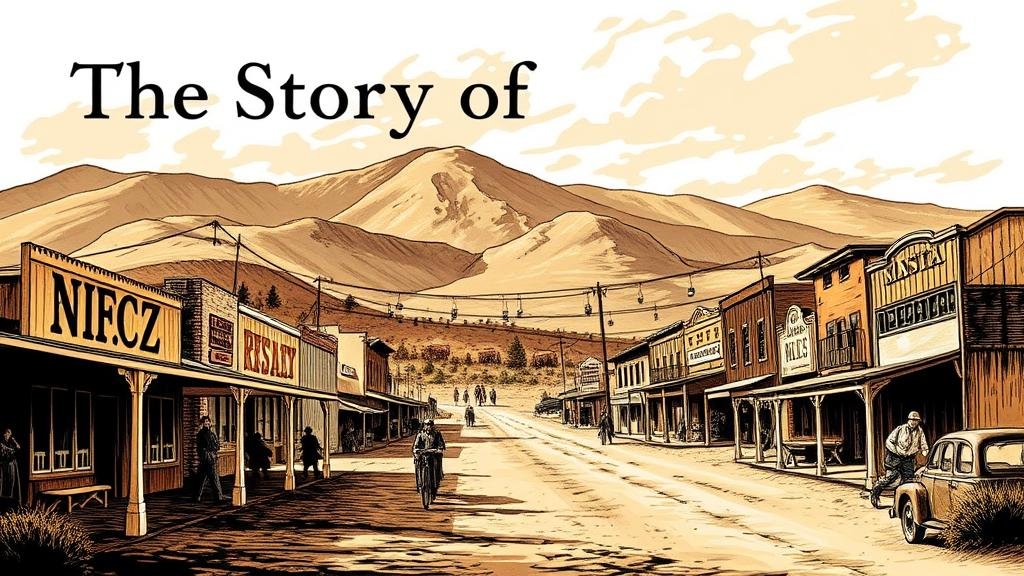The Story of Pinos Altos: New Mexico’s Early Gold Rush Town
The Story of Pinos Altos: New Mexico’s Early Gold Rush Town
Pinos Altos, a small and historic town nestled in the mountainous region of New Mexico, played a pivotal role during the gold rush era of the mid-19th century. Found in Grant County, this once-thriving mining camp became a symbol of the quest for wealth, adventure, and opportunity that characterized the American West. This article delves into the origins, development, and enduring legacy of Pinos Altos, examining how it shaped both local and national narratives of mining and settlement.
The Birth of Pinos Altos
The discovery of gold in Pinos Altos dates back to 1860 when prospectors first stumbled upon placer gold in the creek beds. This marked the beginning of a competitive rush that would attract fortune-seekers from diverse backgrounds–including miners, opportunistic merchants, and settlers. By 1861, the town was formally established, quickly transforming from a modest campsite into a burgeoning gold mining community.
- The town was named Pinos Altos, meaning Tall Pines in Spanish, due to its picturesque mountainous surroundings.
- By 1863, the population had swelled to around 1,500 residents, with numerous businesses springing up to support the mining operations.
The Gold Rush Era
Pinos Altos reached its peak during the 1860s and 1870s, with mining operations extensively extracting resources from the area. The first significant mining operation was the “Pinos Altos Mining Company,†which started operations in 1866. This company, among others, extracted valuable gold and silver from the hills, making the town a bustling hub of economic activity.
The growth was not without challenges. The harsh living conditions, fluctuations in gold prices, and various economic downturns resulted in a boom-and-bust cycle typical of mining towns. Despite these challenges, Pinos Altos garnered a reputation as a community rich in culture and entrepreneurship.
Social and Cultural Life
The towns rapid growth necessitated the establishment of social institutions. By 1867, Pinos Altos featured schools, churches, and social clubs. The town became known for its vibrant nightlife and social events, making it a cultural focal point in the region. Its citizens organized events that celebrated their diverse heritages, leading to a melting pot of cultures that characterized early Western society.
- The establishment of the Gold Hill Hotel in 1867 provided accommodations for travelers and miners, becoming one of Pinos Altos most iconic landmarks.
- Local newspapers began circulating, fostering communication and community engagement among residents.
As with many mining towns, the decline of gold production in the 1880s led to a decrease in the population. By the early 1900s, significant deposit yields diminished, causing many residents to relocate in search of better opportunities. In 1900, the population of Pinos Altos had dwindled to fewer than 100 residents. By the mid-20th century, it had transformed into a quiet ghost town.
But, Pinos Altos preserved its historical significance and charm. Today, it serves as a reminder of the rugged determination of the American spirit and the transient nature of wealth in the mining industry. The Gold Hill Hotel, now a historical site, attracts tourists interested in the history of the region.
Modern-Day Pinos Altos
Today, Pinos Altos is a small but vibrant community that pays homage to its gold rush origins. It hosts cultural events, art exhibitions, and outdoor activities, inviting visitors to explore the rich history and natural beauty of the region. Also, the local government works to preserve historical landmarks to educate future generations about the towns rich past.
- Annual events such as the Pinos Altos Arts and Crafts Festival celebrate local artists and the towns history.
- Tourism has become a vital part of the local economy, with visitors attracted to the stories of miners and the historical buildings that define the town.
Conclusion
Pinos Altos remains an emblem of the gold rush era, embodying the spirit of exploration and the complexities of mining life in the American West. Its history is not merely one of riches and ruins, but a testament to the resilience of a community shaped by both triumphs and tribulations. As a historical site, it provides valuable lessons about the consequences of resource exploitation, cultural diversity, and the impermanence of fortune.
For those intrigued by the allure of the American frontier, Pinos Altos stands as a poignant reminder of how the past continues to shape our understanding of community, economy, and identity in the modern world.



